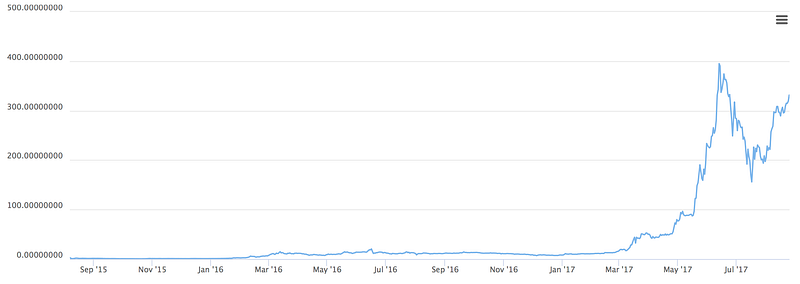What the hell is ICO?
What the hell is ICO?
… and how do we want to build a project center on the Canary Islands?!
To understand the functional model of the ICO, we need to take a look at a classic startup financing model. An average startup lifecycle starts with a “revolutionary” idea, or maybe an MVP is made, and at the very end, the founder will try to get money for their project.

For a software project, most of the costs get burned during the development and marketing, you also have to consider regarding the costs of the production. Whatever, sooner or later you will need money to make progress on the project. The traditional way is to look for an investor, who will get some share in the company (including patents and all related products) and will provide the necessary capital. After investing, the investor will be our business partner, will follow all our steps and in most cases will have an influence on the decisions and on our business processes too. But what if someone does not want or may not be able to involve a traditional investor in a project? Here comes the latest trend of 2017: the ICO.
Ethereum as one of the first ICOs
One of the best examples for an ICO is the Ethereum project. This is a blockchain platform for smart contracts that runs on a decentralized computer network. I don’t want to go over the platform details of Ethereum (we have already discussed it earlier), I just want to point out the most interesting value of it.
The framework is an open source software which can be used or modified by anyone. The network, where our the system is running is decentralized and it’s not owned by the developers. As a matter of fact, there is nothing in the system where an investor could get ownership since the developers of the system have neither the software nor the service. It’s a fact that there is no company behind Ethereum. There are an Ethereum foundation and an Ethereum alliance, but they do not own the Ethereum system, they are responsible only for the maintenance. Ethereum (like Bitcoin) is not owned by anyone!
But then how can you get money for such a project? In a conventional, centralized system, the business model would be to ask for money to run smart contracts (small programs), and later our profits will come from this. This is how Amazon Web Service’s Lambda works for example. However, in the case of Ethereum, since it is not centralized, this can not be done. The brilliant solution is that to run smart contracts, you can pay with the system’s blockchain based currency: Ether (ETH).
Ether, like Bitcoin, is produced by the owners of system maintaining nodes (mining), but unlike bitcoin, the volume does not start at zero: at the launch of the system, 60 million Ethers were sold for money. This was the Initial Coin Offering (ICO), which is the first token issuance to fund the project to cover its costs (software development, etc.).
How can the model be generalized, what is the ICO generally?
Let’s take a closer look at what happened to Ethereum. When a traditional investor invests money in a project, he/she will do it because of the possible profit in the future. He will buy the possible profit on discount rates. This, of course, a very simple way to describe the situation, but this is almost the same thing what’s going on during an ICO. If Ethereum was a traditional service, they would ask for money to run smart contracts. Since this can not be solved here, Ethereum has “tokenized” its future profits and this was sold to the investors.
This almost the same as issuing corporate shares, but these tokens are not really shares since there are no real stakeholders, token owners don’t have voting rights, but they share the profit between each other. Since smart contracts can only be run using Ether, so if there is huge demand regarding the services, there will be a huge demand for Ether also which will raise its exchange rate.

In this way, profit is realized in tokens. For a better understanding, let’s take a look at another example. How would Facebook or even Google incorporate ICOs instead of investors and stock issuance? In both cases, the profit is coming from the advertising, so this should be “tokenized”. In case of Facebook ICO, it would look like that the company would sell advertising tokens. For these tokens (and only for those), you could buy banners on Facebook, buy paid ads in the newsfeed. During the launch, these tokens could be purchased at a low price, and the value of these tokens would increase as the number of users of the services growing as more people can be reached, the value is much higher. In the case of Ethereum to run smart contracts and in the case of Facebook the advertising is the service that produces profits. Profit is what we “tokenize” so with selling the tokens, we can get more money into the project. This is the general model of ICOs.
So how are we going to have a training center on the Canary Islands?
Within the ENVIENTA project, an open-source training center and apartment park blueprints have been completed more than 2 years ago. The buildings of the park will be constructed by recycled containers, the furniture will be done by 3D printing and the power supply will be provided by solar panels. To achieve this, we have a ca. 2000 m2 area on the wonderful Canary Islands. The facility itself is multifunctional: it’s a training center and an apartment park in one. This will be a manifest of our vision: a taste of the future.
A prototype of a possible way of life: independent from public utilities in a cheap, sustainable and environmentally friendly way, but in luxurious conditions (automated households). Our goal is to show an example which can be copied by others as we hope. That is the reason why we are releasing our plans as open source materials: they are free for everyone.
So we have this nice 2000 m2 area, but we need the capital to build the park. Our first idea was a crowdfunding campaign to collect the required funds, but we were not enough to manage such a campaign. Then the “ICO Revolution” started and we decided also: instead of collecting donations, we want to leverage the business potential offered by the ICO model and give ENVIENTA tokens to our supporters/investors as a consideration for their investment. During the fundraising, we will rely on a new kind of ICO-based Kickstarter, KICKICO.

Our KICKICO campaign can be found here at https://www.kickico.com/campaigns/6003/envienta-home-of-the-future-with-efficiency
The implementation is divided into four phases, depending on how many tokens will we be able to sell and how much capital can we collect.
Phase 1
Building the first project center on Canary Islands, Spain. Supporters of our campaign will be accommodated here, what you can with your ENVIENTA tokens. Full automated household, self sustainable systems will be used to show how these systems works. You can try all equipments and get access to their blueprints.
Phase 2
We are adding quality programs to make your time even more valuable what you spend in the facilities. Services like education, accommodation rental (the training center is also an apartment park), tools such as 3D printers, etc. All parts of the training center (container houses, furniture, aqueduct garden, electrical systems, software, etc.) are open source, so the blueprints are available to anyone for free of charge or can be purchased in a manufactured form on request. You can pay with tokens also when purchasing the components.
Phase 3
Developing the ENVIENTA platform, which will serve as a kind of incubator and as an additional center of other open source hardware projects. The platform will provide collaborative services for the hardware developers, will provide legal protection for open source hardware and help bring demand and supply together.
Phase 4
We have to provide financial, marketing and manufacturing related analysis continuously to the open source hardware. Open source hardware is a relatively new area and, due to the free access and decentralized markets, we are expecting exponential growth here. You can recognize the same trends when you check the open source software market (Android, Linux, Ethereum, etc.). Exactly the same things will happen in open source hardware. Although the source code is free and costs nothing, there are plenty of affiliate services that generate profits. In the case of open source hardware, this is more relevant since we are talking about a physical product. In the case of ENVIENTA, these related services (product support, the supply of assets, selling complete systems, etc.) will be the source of the revenue and the profit. ENVIENTA will offer services and products to an exponentially growing new market and the generated profit will be realized in the value of tokens.
The basic idea of ENVIENTA can be compared to TESLA: our primary goal is to find solutions to the current problems of mankind, but at the same time we want to build a good business, so we can catalyze the changes with the resources thus obtained. While the mainstream media is full with the demand for radical changes, we are working hard on these changes.
If you decide that you want to become our investor by attending to our token release, you will be part of our story and you will help us achieve these goals.
Thanks in advance for your support! You can find ENVIENTA ICO token sale page on KICKICO: https://www.kickico.com/campaigns/6003/envienta-home-of-the-future-with-efficiency